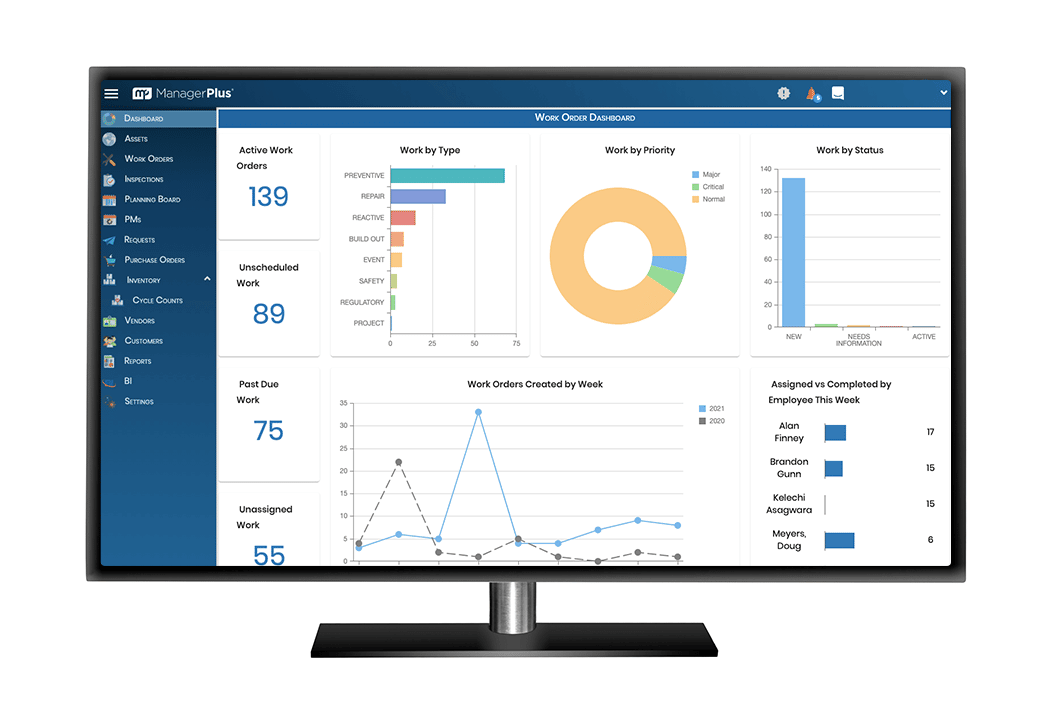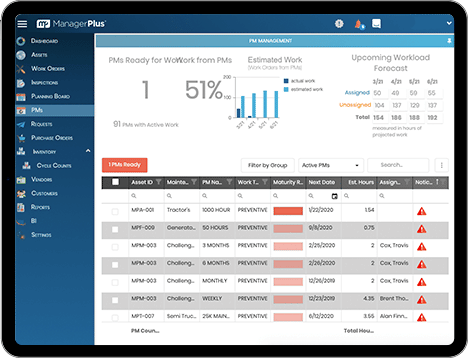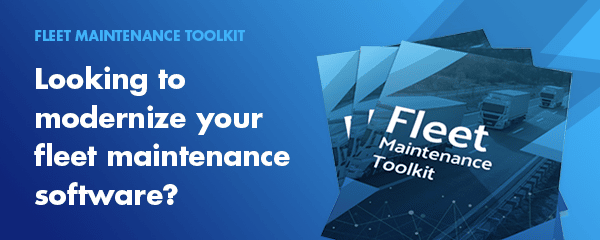Elective vehicles (EVs) are increasing in popularity, and many fleet owners and operators are wondering if it’s time to flip the switch and jump on board.As with any business decision, you want to have as much information as possible. If you’ve been on the fence about transitioning to EVs for your fleet, we’ve laid out some of the biggest benefits you could realize from making the switch and how fleet management software can help you decide.
What is an electric vehicle (EV) fleet?
By now there’s a good chance your organization has begun at least looking into what would be the costs and benefits of switching to electric vehicles for your fleet, and if you haven’t, you should. As EVs become increasingly more popular around the world and as the technology driving them continues to improve, the reasons for adopting EVs into your fleet will become much more compelling.
Not to mention that many governments are beginning to implement bans on ICE vehicles so companies will soon be required to begin shifting to EVs if they haven’t already. While none of these bans have taken effect yet, many countries have pledged to implement them within the next five to ten years, and that trend is likely to continue into the next few decades.
The good news is that some of the biggest companies in the world are investing in EVs, so as the competition heats up, they will be looking to squeeze more and more efficiency out of these vehicles to help convince companies to get on board. This means the benefits of switching to electric vehicles will only increase as the technology improves.
While Tesla is the most recognizable maker of electric vehicles, General Motors, Volkswagen, Ford, and more have all committed to bringing EVs to market in the next few years. Amazon has committed to purchasing over 100,000 EVs for its delivery fleet and with the recent announcement of the all-electric Ford F-150, the best-selling vehicle in the United States for the last 40 years, it’s clear that many companies see a big future for EVs.
Benefits of an EV fleet
Whenever you’re evaluating making changes to your fleet, it’s important to weigh your options to make sure that whatever changes you’re making are the most beneficial for your organization. As a fleet manager, part of your job is to maximize efficiencies and optimize your operations wherever you can.
One of the biggest and most cost-effective ways you can do this is by optimizing your vehicle life cycle strategy, and there are numerous reasons to consider looking at electric vehicles for your next replacement cycle.
Some of the biggest benefits you can see from EVs are:
- Lower cost of ownership
- Less maintenance
- Higher ROI
- Lower operational costs
- Better vehicle performance and efficiency
- Increased safety
Decrease your total cost of ownership (TCO)
For most companies, price is almost always the largest factor involved in any major purchasing decision, but it’s important to look at the total cost of owning a vehicle, not just the upfront cost. While EVs typically do cost more to purchase or lease than traditional ICE vehicles, over the life of the vehicle, EVs can end up being quite a bit cheaper.
For starters, there are a lot fewer parts to break on an electric vehicle. A traditional ICE has about 1,500 parts in the drivetrain alone whereas an EV typically has about 20 parts in its drivetrain.

The technology that powers EVs is also much more energy-efficient than gasoline cars. ICE vehicles only convert about 15% of their fuel energy to propulsion and the remaining 85% is lost to heat or idling while on the other hand, according to the U.S. Environmental Protection Agency (EPA), EVs convert energy five times more efficiently when compared to an ICE vehicle.
And things like regenerative braking, which returns energy back to the car’s battery when the driver lets off the accelerator, extends the life of the battery and the brake pads.
For example, for most current ICE vehicles on the market, the proposed replacement cycle is 36 months or 75,000 miles. For EVs, the proposed replacement cycle is 60 months or 150,000 miles.
Also, keep in mind that the administrational costs of EVs are cheaper as well. In several states, it’s cheaper to register EVs than gasoline cars, and there’s no emissions testing required because EVs have no emissions.
Lower your maintenance costs
As we discovered earlier, the drivetrains in electric vehicles have significantly fewer moving parts than in a traditional internal combustion engine and the same applies throughout the vehicle. EVs only use three types of fluid: coolant, windshield washer fluid, and brake fluid. That’s it. No oil, transmission fluid, engine fluid, or anything else you typically have to track and replace in an ICE engine.
Resources that you typically allocate for routine maintenance tasks like replacing spark plugs can be saved or redistributed because there are literally fewer things you have to do. EVs don’t have spark plugs.
Compound those savings across an entire fleet of vehicles and you’re looking at a not-insignificant amount of money.

Increase your return on investment (ROI) for your vehicles
A big challenge in maintaining an effective vehicle life cycle strategy is ensuring you see a positive return on investment from your fleet vehicles. Knowing when to replace your vehicles is just as important as keeping your costs down.
When EVs first came on the scene, the initial investment to owning one was significant which mean only a few people and organizations could afford to own one. Now, however, car manufacturers and pricing their EVs quite comparatively to traditional ICEs making them much easier for companies to purchase or lease.
And since we’ve already found that the overall costs of operating and EV are lower than gasoline vehicles, the initial investment is well worth it in the long run as you will be able to run your fleet more efficiently and cost-effectively.
Reduce your operating costs
Do you know how much your fleet is spending every year just on fuel costs alone? If you have good fleet management software then that information is easy to find and track, but either way, it’s probably much more than you want to.
Fuel costs are often the largest expense for any fleet operator not just in the cost of fuel, but in the time spent by your drivers getting to and from the gas station and filling up the tank.
According to the U.S. Department of Energy, ICE vehicles incur fuel costs between $160-$200/month while EVs have energy costs of between $50-$80/month. Most major economic studies are also predicting that the costs of fuel will rise by about 4% per barrel over the foreseeable future while the costs of generating electricity are expected to drop 15% by 2050.
Keep in mind that there are a large number of factors at play in the energy market around the world and the costs of generating electricity continue to vary wildly but as the world continues to shift towards new sources of energy, the price of electricity is expected to decline over time.
Improve your vehicle performance and efficiency
Looking at purchasing a vehicle for personal use and purchasing one for business needs are two very different things so when evaluating the effectiveness of EVs, you need to look at how they perform in the tasks you need for your business.
Aside from the cost benefits we’ve seen from electric vehicles, EVs also provide several technological advantages you can’t get from ICE vehicles. One example is instant torque.
While diesel engines have long been relied upon in the trucking and heavy vehicle industries for their increased power and torque, EVs can provide maximum instant torque from the moment the driver hits the accelerator.
This has tremendous impacts for trucking and passenger fleets as it allows vehicles to get up to speed quicker but it also means that less force is required to get up to speed. In more basic terms this translates to less strain on the battery and engine meaning a longer vehicle life span with fewer costs.
Keep your drivers safe
One of the most important considerations to look at for electric vehicles is that they are safer for your drivers by design. EVs are much less likely to catch on fire after an accident than ICE vehicles and due to the way the vehicles are designed and built, there is more protection for your drivers.
The battery in an EV is built into the floor of the vehicle which gives it a lower center of gravity and the rest of the weight can be more evenly distributed across the front and rear of the vehicle meaning it’s less likely to roll over.
And because there’s no engine to worry about, carmakers can build more support into the body of the vehicle and include more impact absorbing areas in the high-impact locations around the front and rear of the vehicle.
Fleet management software can help you decide best opportunity to go electric
When you’re looking at moving to electric vehicles for your fleet, you need to know where your costs are for your current vehicles so you can make the most informed decision about when to replace them.
Fleet management software like ManagerPlus has all the tools you need to keep track of all your vehicle expenses, including the hidden ones you may not think about so you can begin to optimize your fleet management operations in preparation for moving to EVs.

ManagerPlus helps you:
- Understand the TCO of your vehicles
- Develop and implement a preventive maintenance strategy
- Track and store vehicle inspections
- Generate custom KPI reports
Understand vehicle TCO
The most important factor in determining which vehicles to purchase for your fleet whether as new additions or to replace older ones is the total cost of ownership. It doesn’t make sense to replace a vehicle that is still performing well and is still cost-effective for your business.
However, if you don’t have the right data, you can’t truly understand how much each vehicle is costing you. Remember, you need to consider more than just purchase price, maintenance, and fuel costs when trying to figure out your TCO.
ManagerPlus helps you keep track of all the expenses associated with each of your vehicles. You can keep track of how much time was spent on repairs, how many parts were used from your inventory, how often it needs to be repaired, and more. All of these little things need to be factored into your TCO calculations for your vehicles.
Keep maintenance costs down with preventive maintenance
Next to fuel costs, maintenance costs can easily be the most expensive part of owning fleet vehicles, especially if you simply wait until they break down to fix them.
Preventive maintenance is the most effective way to keep your vehicles running by helping anticipate and perform routine maintenance tasks before they become major issues.
The classic example is replacing the oil in a truck at certain mileage intervals instead of waiting for the engine to seize but you can use preventive maintenance software to plan out almost any routine maintenance task.
Perform and store updated vehicle inspections
Vehicle inspections are required to remain in compliance with local and federal government regulations, but they also help you stay on top of maintenance and repair costs.
Fleet management software makes it easy for your drivers to perform inspections and the Operator Companion app from ManagerPlus empowers them to do this from wherever they are. They can quickly scan a barcode on their vehicle, perform their inspection, which is then automatically uploaded and stored in your database forever.
Our software lives in the cloud which means that you have always access to these reports and can instantly pull them up whenever you need them. If a vehicle fails inspection, you can automatically notify the right technician to get started on repairs right away.
Make informed decisions with detailed cost analysis reports
The best business decisions are made with the right data. If you’re looking at moving to EVs for your fleet, you need to know when the best time is so you don’t waste money. All the data you collect in ManagerPlus can be broken down into customized cost analysis reports based on the KPIs you want to track.
If you want to improve your maintenance operations, you can set your KPIs around your team’s maintenance activity so you can track their progress and improve.
If you’ve been trying to convince the decisions makers to replace some of your vehicles or invest in better equipment, you can generate reports with the right data to help them make the decision.
Next steps
Whether you’ve been thinking about switching your fleet over to electric vehicles or you just want to lower your costs and optimize your fleet operations, ManagerPlus can help you do it.
Getting started with us is easy. Simply reach out and schedule a live demo to see our software in action for yourself or get a quote to better understand our pricing.
Executive summary
Electric vehicles have proven themselves to be more than just a fad and as more carmakers start building them, the transition to EVs will only get easier. If you’ve been hesitant to make the switch for your fleet, there are quite a few benefits of EVs that you might want to consider.
- Lower cost of ownership
- Less maintenance
- Higher ROI
- Lower operational costs
- Better vehicle performance and efficiency
- Increased safety
The key to making the switch is knowing the right time to do it. Using ManagerPlus fleet management software can help you track your costs and give you the data to know when the time is right.


